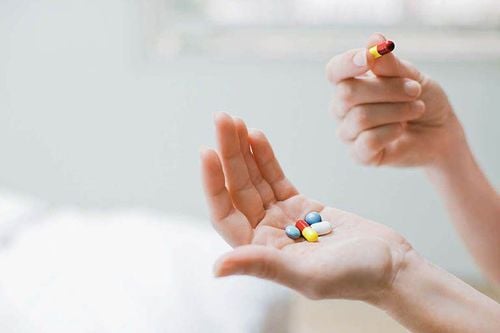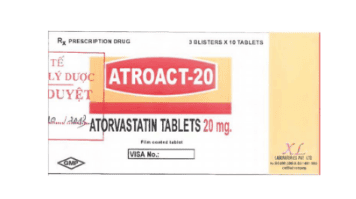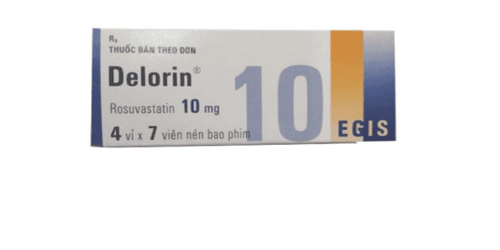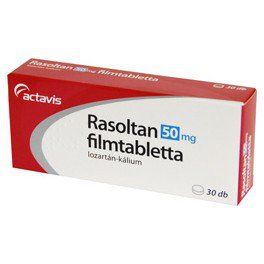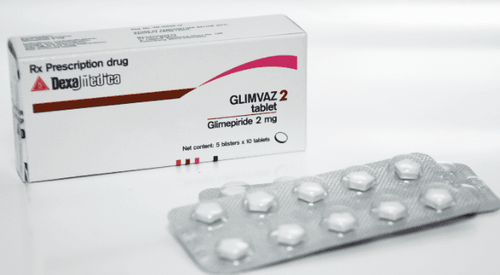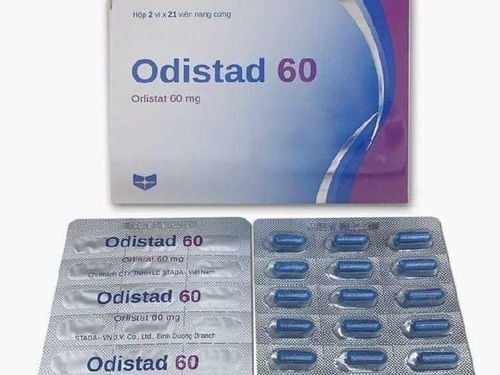This is an automatically translated article.
Repaglinid drug, also known as Repaglinide, belongs to the group of hormone drugs, with the main ingredient being the active ingredient Repaglinide 1mg. Repaglinide is available in tablet form (Repaglinide 1mg, Repaglinide 2mg or Repaglinide 0.5mg). The drug is prescribed by a doctor to treat type 2 diabetes.
1. What are the uses of Repaglinid?
Repaglinid drug is used in the following cases:
People with type II diabetes cannot control blood glucose by diet, weight loss and reasonable exercise. Repaglinide can be used in combination with Metformin or Thiazolidinedion when the drug alone does not control blood sugar. Insulin can be replaced if combined use still fails to control blood sugar.
2. Dosage and how to use Repaglinide
2.1. How to take Repaglinide is to be taken orally and should be taken with food. The drug is taken 15 minutes before a meal but the time can vary from just before a meal to 30 minutes before a meal.
2.2. Dosage The starting dose is 0.5 mg x 3 times/day, can use Repaglinide 2mg x 3 times/day, up to 4mg x 3 times/day. Take the medicine within 15 minutes before meals.
Specific dosage will depend on the patient's condition and blood sugar levels. Refer to the dosage of Repaglinide drug used for patients with type II diabetes as follows:
Adults:
People with type II diabetes who have never used the drug or whose HbA1c level is less than 8%, should start with a dose of 0 , 5 mg/time, 3 times a day before each meal. Patients who have been treated with hypoglycemic drugs and have HbA1c greater than or equal to 8%, should start with 1 mg or 2 mg / time, 3 times a day before each meal. Dose adjustment: Determine the level of dose adjustment on the basis of glycemic response when taking Repaglinide, usually need to determine fasting blood glucose. Double dose to a maximum dose of 4 mg Repaglinide/time until goal of glycemic control is achieved, at least 1 week after dose adjustment to check patient's response. The maintenance dose is from 0.5 to 4 mg Repaglinide/time. Repaglinide may be given 2, 3 or 4 times a day before each meal depending on response and appropriate changes to the patient's diet. Do not exceed a total dose of 16mg per day. Use Repaglinide to replace other antidiabetic agents:
Repaglinide is started to be used as an alternative to other antidiabetic agents 1 day after stopping the previous drug. Because of the possible increased risk of synergistic effects, the patient's blood glucose should be closely monitored. When replacing Repaglinide with a drug with a long elimination half-life such as chlorpropamide of the sulfonylurea group, the follow-up time should be longer, possibly extending treatment up to 1 week. Combination therapy:
When using Repaglinide alone without adequate blood sugar control, it may be considered in combination with Thiazolidinedion or Metformin. In contrast, when monotherapy with Thiazolidinedion and Metformin is not effective, it can be used in combination with Repaglinide. The initial dosing and dose adjustment of Repagnilide in combination with other antidiabetic agents is the same as in Repaglinide monotherapy. When being treated with metformin, but there is little effect and want to combine with Repaglinide, keep the metformin dose and add Repaglinide 0.5mg / time, 3 times / day. If blood sugar is still not controlled, the dose of Repaglinide can be increased. Dose adjustment for diabetic patients with mild to moderate renal impairment with Clcr between 40 - 80 ml/min: No initial dose adjustment is required. Clcr from 20 - 40 ml/min (severe renal impairment): Initial dose is 0.5 mg/time before meals, with caution when adjusting dose. Dose for patients with hepatic impairment:
Use the full dose of Repaglinid to start and maintain, need to increase the adjustment time between 2 doses. Take the medicine within 15 - 30 minutes before eating. Do not use Repaglinide if the patient does not eat to avoid hypoglycemia. If you forget to take a pill, you can still take it at the next meal, but pay attention not to make up for a double dose. For patients with additional meals, 1 additional dose of Repaglinide can be taken before the additional meal. Watch for signs of palpitations, sweating palms, tachycardia, sweating, dizziness, .. are signs of low blood sugar. Hemoglobin glycosylate (Hb A1c) and fasting blood sugar should be monitored after every 3 months of taking the drug, in order to bring these indexes back to normal. During dose adjustment, fasting glycemic index should be monitored frequently to check drug response. The antidiabetic effect of Repaglinide may decrease after a period of use, due to a decrease in the response of the body to the drug or the worsening of diabetes itself. The doctor must guide the patient to know the symptoms, causes and ways to deal with low blood sugar.
3. Contraindications to taking Repaglinide
Repaglinide drug should not be used in the following cases:
Patients with hypersensitivity to Repaglinide or to any of the ingredients in the drug. Type I diabetes (insulin dependent). Diabetic patients with diabetic ketoacidosis with or without coma. Pregnant or breastfeeding. Children < 12 years old. Severe liver and kidney failure.
4. Repaglinide drug interactions
Repaglinide drug when combined with some of the following drugs can occur drug interactions.
Drugs: ACEs, NSAIDs, MAOIs, non-selective β-blockers, salicylate, octreotide, alcohol, anabolic steroids increase the hypoglycemic effect. Corticosteroids, oral contraceptives, Thiazides, Danazol, Thyroid hormones, sympathomimetic agents reduce the hypoglycemic effect. Do not use Repaglinide with Gemfibrozil and Conivaptan. When combining Repaglinide with hypoglycemic agents may increase the effect and extent of hypoglycemic agents. The effect of Repaglinide may be increased when co-administered with antifungal agents (azole derivatives, systemic), Cyclosporin, Conivaptan or moderate inhibitors of CYP3A4, CYP2C8, Deferasirox, Dasatinib, Gemfibrozil, Eltrombopag , macrolide antibiotics, medicinal herbs with hypoglycemic effect, Pegvisomant, Trimethoprim. The effect of Repaglinide may be reduced when used with corticosteroids (oral, systemic, aerosol) or inducers of CYP 2C8, inducers of CYP3A4, CYP 3A4, Deferasirox, Luteinizing hormone drugs- releasing hormone analog, Rifampicin derivative, Thiazide diuretic, Somatropin, Tocilizumab. Interactions with alcohol, dietary supplements and medicinal herbs: Do not take Repaglinide while drinking alcohol, because it will increase the risk of hypoglycemia. Food may reduce the hypoglycemic effect of Repaglinide. Repaglinide should be avoided when eating with reishi, bitter gourd, aloe, fenugreek, bilberry, burdock, celery, garlic, ginseng, Han leaf, hollyhock, ... because it can cause increased risk of hypoglycemia.
5. Side effects when using the drug Repaglinide
During the use of Repaglinid, patients may experience some unwanted side effects such as:
Hypoglycemia, increased blood pressure Transient visual disturbances Abdominal pain, diarrhea, nausea, vomiting, constipation, dyspepsia Mild transient elevation of liver enzymes, liver dysfunction, acute hepatitis Itching, erythema, urticaria. Headache Upper respiratory tract infection Ischemia, chest pain, hemolytic anemia, leukopenia and thrombocytopenia Urinary tract infection Back pain, joint pain Sinusitis, bronchitis Allergies Anaphylaxis Acute pancreatitis Stevens-Johnson syndrome
6. Pay attention to the precautions of Repaglinid
Patients should adhere to the exercise and diet regimen, use the drug dosage, regularly monitor blood sugar, avoid hypoglycemia, especially when driving, driving and working.
Repaglinide should be used with caution in patients with hepatic impairment, severe renal impairment, malnutrition, the elderly, and patients with adrenal or thyroid dysfunction who may be more susceptible to hypoglycemia. blood.
In the case of drug use in patients with renal impairment, there is no need to adjust the starting dose, but caution must be taken when increasing the dose. In the case of patients with hepatic impairment, there is no need to adjust the starting dose. However, the waiting period for increasing the dose should be longer than at least 1 week. The elderly should be closely monitored when initiating therapy with Repaglinide, as they are very susceptible to hypoglycemia. Repaglinide therapy can be discontinued when necessary for patients with infections, high fever, trauma, surgery and temporary replacement of insulin therapy. Care should be taken when using an appropriate dose for each subject to avoid hypoglycemia treated with Repaglinide. The side effect of Repaglinide can cause low blood sugar, so extreme care should be taken when driving a vehicle or operating machinery. There are insufficient data on the safety of repaglinide in pregnant women. Because congenital risks in the fetus can be caused by any blood sugar abnormalities during pregnancy. Therefore, the use of insulin is still recommended throughout pregnancy to control blood sugar. If a woman taking Repaglinide becomes pregnant, she should stop taking the drug immediately and replace it with insulin. There is not enough information to show that Repaglinide is present in the milk of mother rats when taking the drug. Therefore, Repaglinide should be avoided in nursing women. If it is necessary to take the drug, breast-feeding should be discontinued. Repaglinide drug belongs to the group of hormonal drugs, with the main active ingredient being the active ingredient Repaglinide 1mg. The drug is prescribed by a doctor to treat type 2 diabetes. To ensure effective treatment and avoid unwanted side effects, patients need to strictly follow the instructions of the doctor, professional pharmacist.
Follow Vinmec International General Hospital website to get more health, nutrition and beauty information to protect the health of yourself and your loved ones in your family.
Please dial HOTLINE for more information or register for an appointment HERE. Download MyVinmec app to make appointments faster and to manage your bookings easily.




